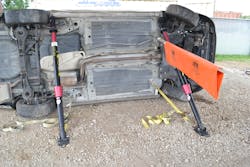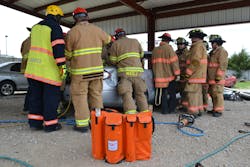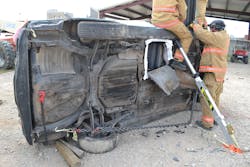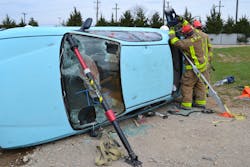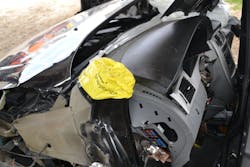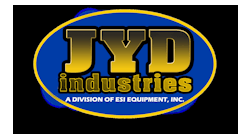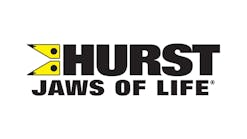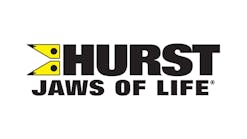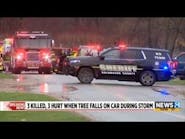University of Extrication: Vehicle Rescue Responder Safety
Topic: Safety protocols and equipment for MVCs
Objective: The rescue team shall conduct a responder injury-potential safety assessment
Task: Conduct an injury-potential assessment, obtain necessary safety equipment and implement SOGs/SOPs that address rescuer protection and safety at MVC scenes
This University of Extrication article addresses important considerations for an agency that’s working to improve responder safety at motor vehicle collisions (MVCs). It includes specific guidance for safety at these technical rescue calls. Several examples of injury-prevention equipment that can be used to protect personnel and patients at MVCs are examined.
Some safety items that are discussed are commercially available materials that are designed specifically to minimize injury potential and improve safety, while others are simple, homemade, improvised items. There is no shame in having homemade safety devices. The harm comes from not having any safety equipment at all or, worse yet, having safety equipment that no one uses.The safety challenge
According to NFPA’s “United States Firefighter Injuries in 2018” report, there were an estimated 58,250 injuries to fire service personnel in 2018. Of these, an estimated 11,625 occurred at nonfireground incidents, including technical rescue and MVC responses. Overall, the NFPA reports that strains, sprains and muscular pain accounted for 59 percent of these nonfireground injuries.
In “Volunteer Firefighter Injuries,” NFPA reported that volunteer firefighter injuries most often involved hands and fingers, neck and shoulders, knees and ankles, which reminds us of just how vulnerable that we are during responses, particularly at vehicle crashes.Assessment
The Occupational Safety and Health Administration (OSHA) encourages agencies to go through the process of hazard identification as part of an ongoing safety and health program. In fact, OSHA representatives understand that a significant root cause of worker injuries is the failure to identify or recognize that safety hazards are present, particularly those that should be anticipated.
Rescue agency leadership and their personnel should brainstorm on experiences from past MVC incidents within their response area, particularly where a responder injury, close call or near-miss occurred. The focus would be to: determine the exposure to underlying hazards for personnel; identify the hazards’ causes; understand why the injury or near-miss did or could occur; identify safety and health program shortcomings; get adequate safety equipment; and implement prevention procedures/protocols.When an agency prepares to develop its hazard and injury potential assessment for MVC incident responses, several key areas must be considered. These include:
- working in or near moving traffic
- head protection
- eye protection
- respiratory protection
- hand protection
- upper and lower body protection
One safety risk and injury potential that is present at every MVC response scene is the struck-by hazard. This is because we work in or near moving traffic, particularly when the crash-damaged vehicle(s) and/or patient(s) can’t be moved to a safer location. A “work it” incident that includes significant vehicle damage or where extrication work is required instantly becomes a high-frequency/high-risk response that has great exposure to injury potential.
At working crash scenes, responders and patients alike come in close proximity to metal and glass “sharps” (one of the many significant yet common injury potentials that must be anticipated during the assessment process).
When considering PPE for responders, safety glasses for eye protection can minimize exposure to dust, dirt, airborne debris and pressurized-fluid injuries. Respiratory exposure can be managed with N95-type facial masks. Body, head, hand and foot safety can be increased by providing and requiring donning of appropriate PPE.Written protocols
Having a written safety protocol in place and insisting on compliance with the safety-oriented SOG/SOP at crash scenes as well as during vehicle-rescue training can go a long way toward minimizing the potential for responder injury. Company officers, as supervisors, must set the example. (Remember, you aren’t exempt from being injured yourself just because you wear a different color helmet.) The PPE example that officers set, their attitude about responder safety and their safe or unsafe actions on scene say a lot about how serious that they are about adhering to department safety procedures. Officers are a safety mirror, reflecting their safety values back to their fellow crewmembers.
Insisting on being safe from start to finish, from arrival to clean-up and termination, also can reduce department and individual civil liability exposure if an injury were to occur and can improve occupational safety workers compensation-type compliance.
Injury-protection equipment
There are many available sources for an agency to obtain safety equipment to address hazards that commonly are found at MVCs, so much so that an agency would be unable to say in a legal deposition that it didn’t know of the existence of safety items, didn’t need them or wasn’t able to locate a source for a given piece of safety equipment.
A simple example of this would be a vehicle’s glass window or windshield pane that’s intact when rescuers arrive on scene. The exposure and risk of injury is small until a rescuer breaks out the laminated or tempered glass window. If he/she is careless and leaves glass shards all around the opening and on the ground, the agency and rescuer are exposed to increased injury potential and liability.
Inventories of safety equipment that can be deployed at an MVC should include:
- hard, rigid, see-through protective panels to physically protect patients and rescuers
- soft, pliable, see-through panels to position near patients and rescuers during rescue tasks
- cover-type material (pads, blankets, extrication covers, duct tape, etc.) to protect against cut roof-pillar sharps
- material (soft, pliable blanket-type extrication covers, pads that have clips or embedded magnets, tape, etc.) to cover large sharps areas
Put to the test
Technical rescue personnel know that hazards exist at vehicle crash scenes. Professional research reports along with close call and near-miss case studies from within our own industry clearly identify that responder injuries occur at MVCs and that they typically are preventable.
It is prudent for rescue crews to conduct an injury potential assessment within their response district. They should obtain necessary safety equipment and implement SOGs/SOPs that address responder protection and safety at MVC scenes. Once safety equipment is in inventory and protocols are developed, genuine training on vehicle-rescue safety must follow before the real world puts our safety exposure to the ultimate test.
Hazard and Injury Potential Assessment Checklist for MVCs
· Struck-by hazard potential
o working in or near moving traffic
· Responder PPE requirements
o eye
o hand
o head
o respiratory
o upper and lower body
· Vehicle component hazards
o electrical power/batteries
o flammable liquids, etc.
o fluids
o stored energy
o supplemental restraint systems
· Fire safety
· Slip and trip hazards
· Scene and work-area lighting
· Debris management
· ‘Sharps’ contact and covering materials
· Hazard identification marking
· Safety during extrication tasks

Ron Moore
RON MOORE, who is a Firehouse contributing editor, recently retired as a division chief with the McKinney, TX, Fire Department and now serves with Prosper, TX, Fire Rescue. He self-published the Vehicle Rescue 1-2-3 training manual and serves as the forum moderator for the extrication section of Firehouse.com . Moore can be contacted directly at [email protected].
